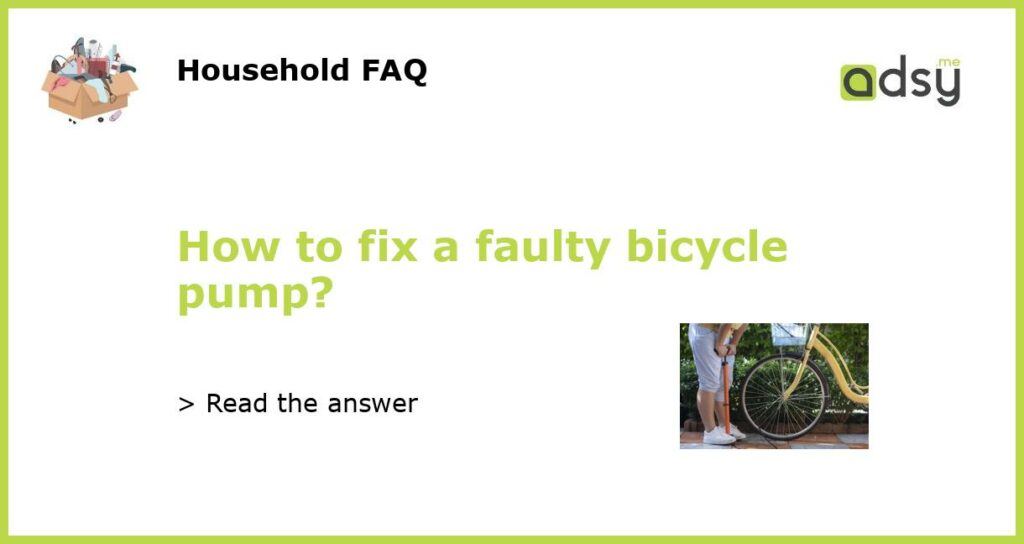Understanding the problem with your bicycle pump
Before fixing a faulty bicycle pump, it’s important to understand the common issues that it can have. Some common problems include leaking air, difficulty in pumping, and broken parts. To fix a faulty bicycle pump, you need to identify the issue first. For instance, if the pump is not sealing properly, it may be due to issues in the valve or the pump head. Similarly, if the pump’s gauge is not working, it may be due to a damaged dial or a broken button.
Checking the pump’s fittings and connections
One easy fix for a faulty bicycle pump is to check its fittings and connections. Sometimes, loose connections can lead to air leaks, making it difficult to pump. Check the pump’s hose, valve, and pump head to ensure that they are tightly and securely connected. Ensure that the valve stem is not bent, as it can also cause air leaks. If there’s a visible damage to any of these parts, consider replacing them.
Replacing broken parts
If you have a broken part in your bicycle pump, it may not work properly. Identifying which part is broken is the first step. Broken parts may include the pump handle, gauge, hose, or the valve itself. Check your pump’s manual to see if they have replacement parts available. If you’re not sure which part is broken or how to replace it, take it to a bike repair shop for assistance.
Lubricating the pump
Another common issue with bicycle pumps is that they require lubrication. If your pump’s piston is sticking, for instance, lubrication may help to ease the movement. Use a lightweight lubricant, such as a silicone or Teflon spray, to lubricate the pump’s moving parts. Ensure that the lubricant is evenly distributed and wipe off any excess. Additionally, ensure that your pump is clean before applying lubrication.
Preventing future problems
Once you have fixed your faulty bicycle pump, it’s important to take steps to prevent future problems. Always store your pump in a dry and clean place to reduce the risk of rusting. Regularly check your pump’s fittings and connections, and ensure that they are tight and securely connected. Consider buying a pump head protector to prevent damage to this part. If you cycle regularly, consider investing in a higher-quality bicycle pump to reduce the risk of frequent breakdowns.






